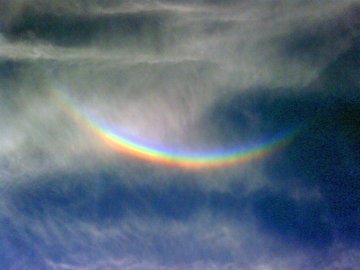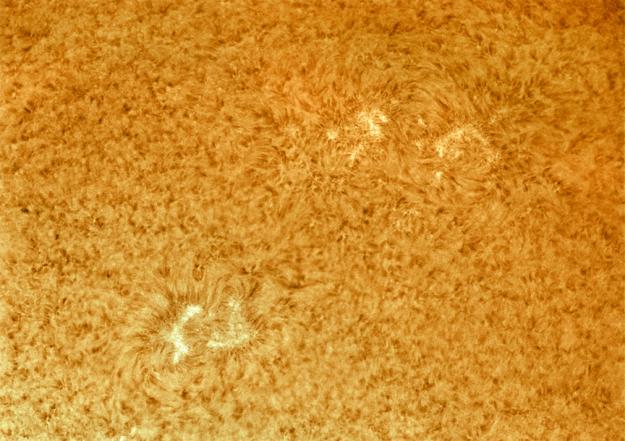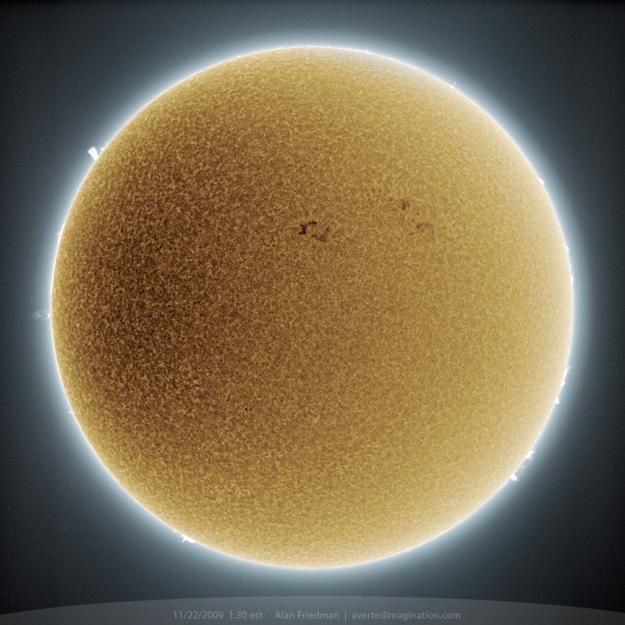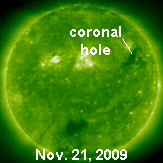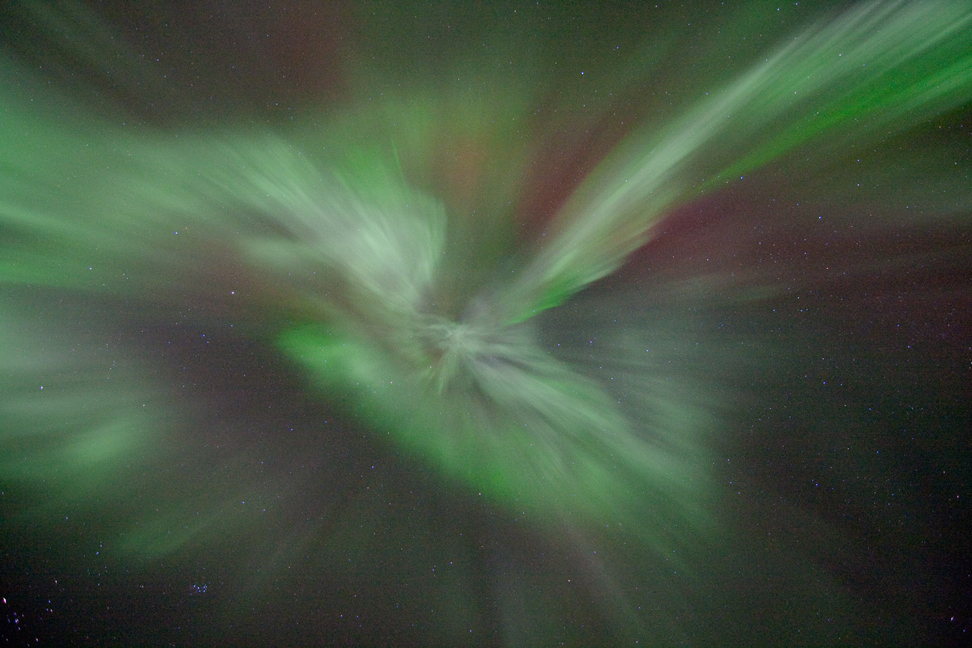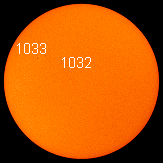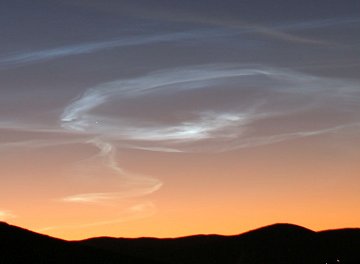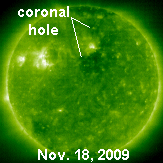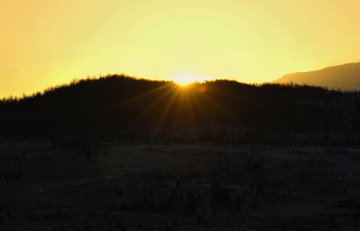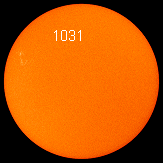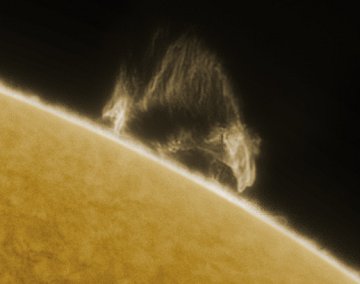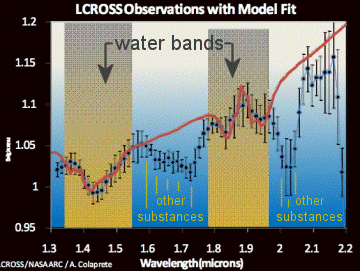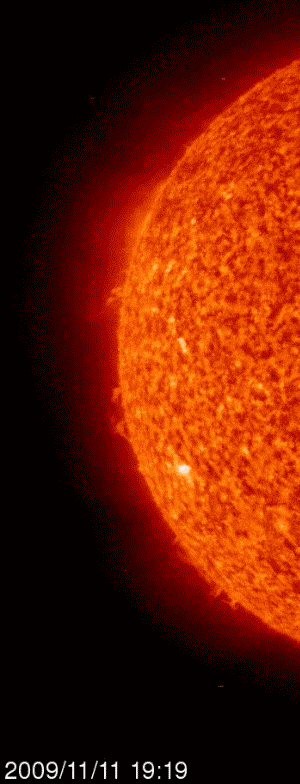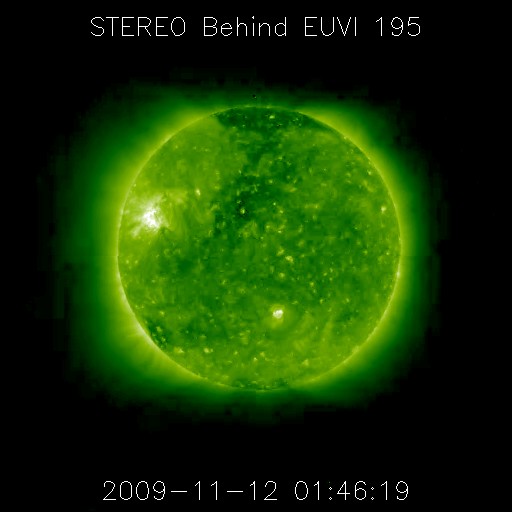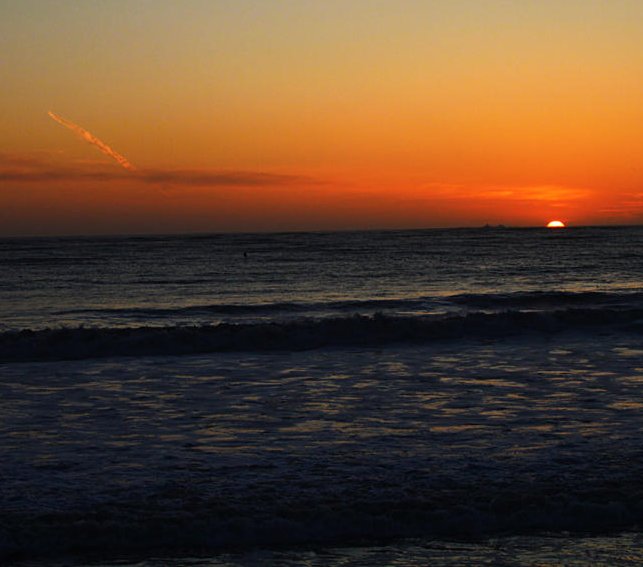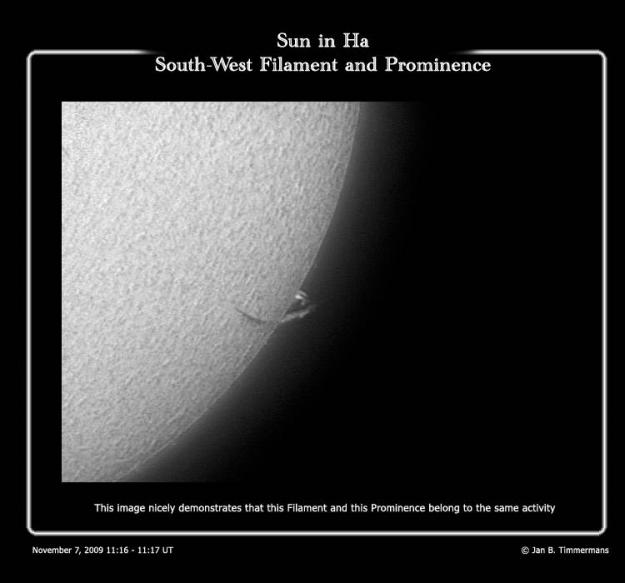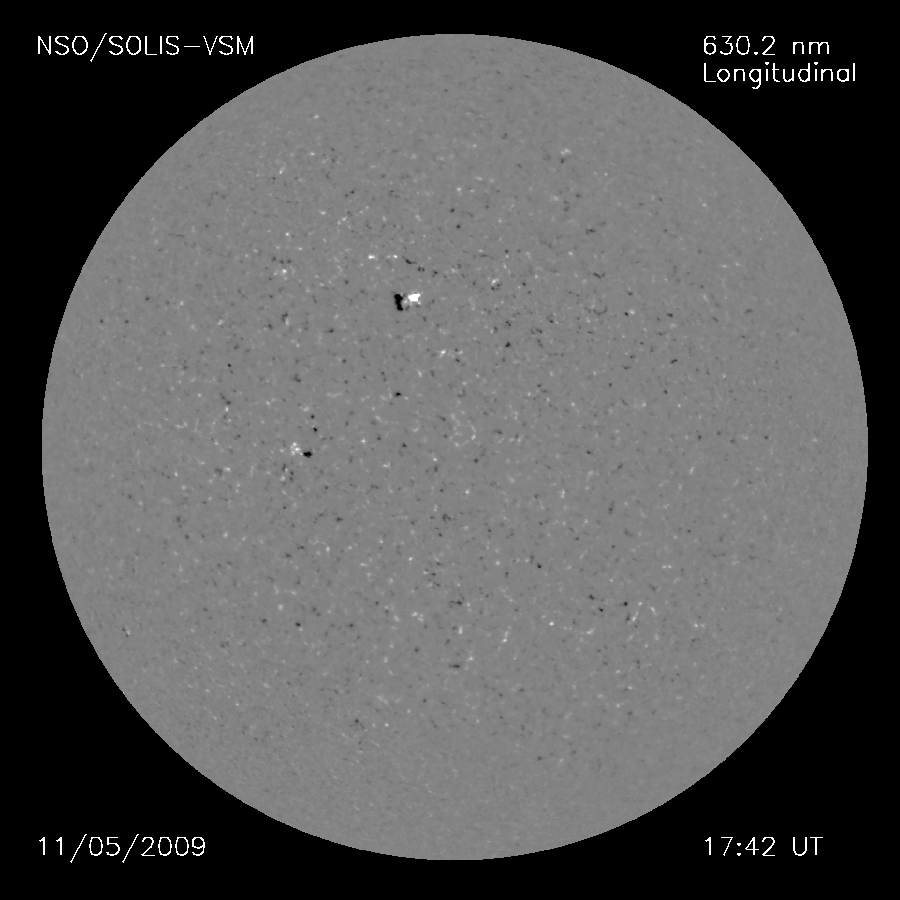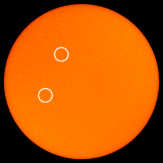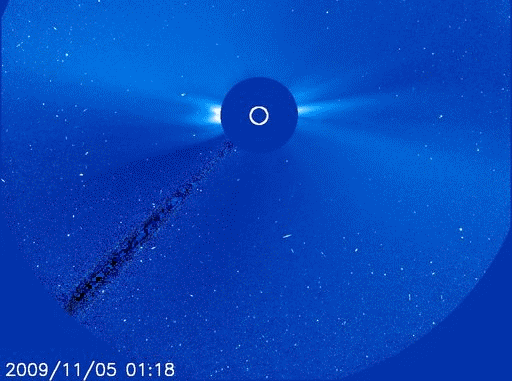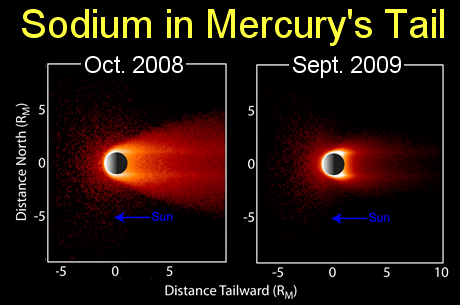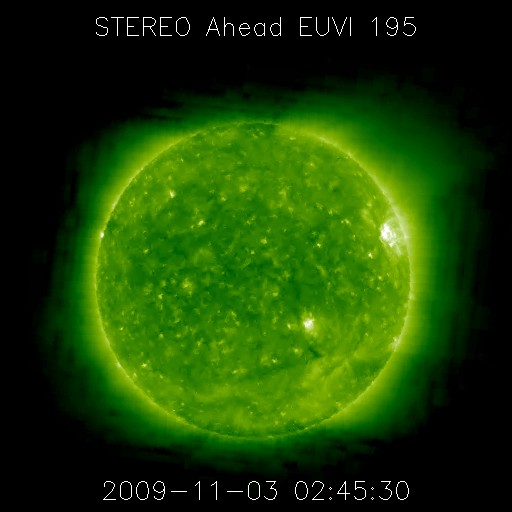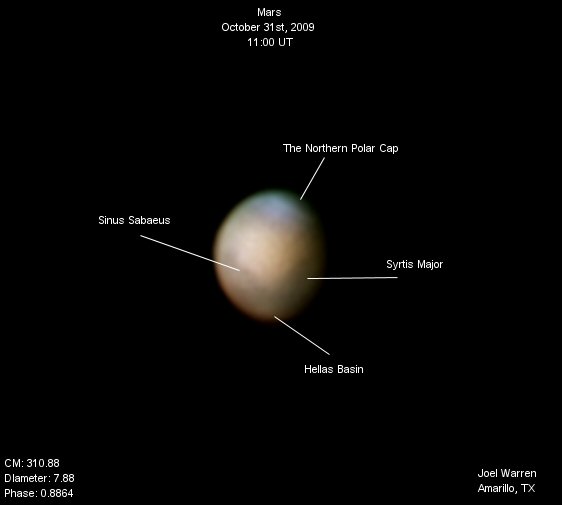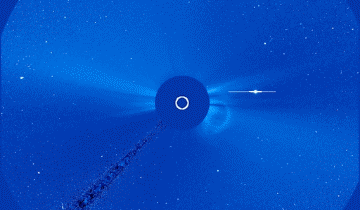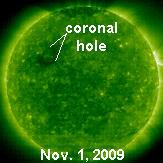On February 2, 2009, there were 1019 potentially hazardous asteroids.
On April 8th, there were 1050 potentially hazardous asteroids.
On May 3, there were 1054 potentially hazardous asteroids.
On June 2, there were 1061 potentially hazardous asteroids
On July 23rd, there are 1067 potentially hazardous asteroids.
On August 31st, there are 1068 potentially hazardous asteroids.
On September 21, there are 1069 potentially hazardous asteroids.
On October 18, there are 1078 potentially hazardous asteroids.
On November 1, there are 1077 potentially hazardous asteroids.
On November 18, there are 1080 potentially hazardous asteroids
| Asteroid |
Date(UT)
|
Miss Distance
|
Mag.
|
Size
|
| 2001 CV26 |
Oct. 8
|
9.8 LD
|
13
|
2.2 km
|
| 2009 TJ |
Oct. 13
|
10.8 LD
|
18
|
130 m
|
| 2009 TM8 |
Oct. 17
|
0.9 LD
|
17
|
10 m
|
| 2009 TF8 |
Oct. 17
|
7.6 LD
|
19
|
20 m
|
| 2009 TH8 |
Oct. 19
|
4.5 LD
|
18
|
45 m
|
| 2009 UE |
Oct. 19
|
2.5 LD
|
19
|
40 m
|
| 2009 UD |
Oct. 20
|
2.0 LD
|
17
|
17 m
|
| 1999 AP10 |
Oct. 20
|
29.7 LD
|
13
|
2.7 km
|
| 2009 TO8 |
Oct. 21
|
7.4 LD
|
19
|
27 m
|
| 2009 UJ |
Oct. 22
|
6.8 LD
|
19
|
25 m
|
|
On November 3,
2009 there were
1077
potentially
hazardous
asteroids.
Nov. 2009
Earth-asteroid
encounters:
|
|
TOWARD THE END OF TIME
IT'S THE DANGER OF THE SUN
| 11-30-09 - No sunspots today
Current conditions
Solar
wind speed: 271.8 km/sec density: 1.2 protons/cm3 explanation | more data Updated: Today at 2345 UT X-ray Solar Flares 6-hr max: A0 2340 UT Nov30 24-hr: A0 0125 UT Nov30 explanation | more data Updated: Today at: 2340 UT UPSIDE-DOWN RAINBOWS: 'tis the season for upside-down rainbows. Just yesterday, one appeared over Dothan, Alabama: "I've never seen anything like it before," says photographer Maria Doty. "It was a very unusual sight and the colors were bright." The technical name for this phenomenon is circumzenithal arc or "CZA" for short--and it's no rainbow. CZAs are formed by sunlight shining through plate-shaped ice crystals in high clouds. Atmospheric optics expert Les Cowley calls it "the most beautiful of all ice haloes." First timers often describe the CZA as an 'upside down rainbow' and "someone has also likened it to 'a grin in the sky,'" he adds. Circumzenithal arcs typically appear in late autumn and early winter when the air is icy and the sun is low. "The CZA forms only when sun is less than 32.3° high," notes Cowley. As winter solstice approaches, "upside down rainbows" will become increasingly common. Look for them!
|
||||||
| 11-29-09 - No sunspots today
Current conditions
Solar
wind speed: 301.6 km/sec density: 0.3 protons/cm3 explanation | more data Updated: Today at 2343 UT X-ray Solar Flares 6-hr max: A0 2340 UT Nov29 24-hr: A0 2340 UT Nov29 explanation | more data Updated: Today at: 2340 UT
|
||||||
| 11-28-09 - No sunspots today
Current conditions
Solar
wind speed: 342.7 km/sec density: 0.5 protons/cm3 explanation | more data Updated: Today at 2344 UT X-ray Solar Flares 6-hr max: A0 2045 UT Nov28 24-hr: A0 2045 UT Nov28 explanation | more data Updated: Today at: 2340 UT EXTRATERRESTRIAL AURORAS: Lately, NASA's Cassini spacecraft has been monitoring some lovely Northern Lights--on Saturn! Saturn's auroras tower 750 miles above the planet's atmosphere, forming a ring of shimmering light wider than Earth itself. Mission scientist Andy Ingersoll discusses the findings in a 40 MB video from NASA.
|
||||||
| 11-27-09 - No sunspots today
Current conditions
Solar
wind speed: 331.0 km/sec density: 0.5 protons/cm3 explanation | more data Updated: Today at 2345 UT X-ray Solar Flares 6-hr max: A0 2335 UT Nov27 24-hr: A0 2335 UT Nov27 explanation | more data Updated: Today at: 2340 UT
|
||||||
| 11-26-09 - No sunspot today
Current conditions
Solar
wind speed: 385.5 km/sec density: 2.3 protons/cm3 explanation | more data Updated: Today at 1847 UT X-ray Solar Flares 6-hr max: A0 1345 UT Nov26 24-hr: A0 1345 UT Nov26 explanation | more data Updated: Today at: 1845 UT
|
||||||
| 11-25-09 - No sunspot today
Current conditions
Solar
wind speed: 429.7 km/sec density: 0.3 protons/cm3 explanation | more data Updated: Today at 2345 UT X-ray Solar Flares 6-hr max: A0 2155 UT Nov25 24-hr: A3 0055 UT Nov25 explanation | more data Updated: Today at: 2340 UT
|
||||||
| 11-24-09 - Sunspot 1033 has disappeared
Current conditions
Solar
wind speed: 449.5 km/sec density: 4.9 protons/cm3 explanation | more data Updated: Today at 1836 UT X-ray Solar Flares 6-hr max: A0 2340 UT Nov24 24-hr: A2 1655 UT Nov24 explanation | more data Updated: Today at: 2340 UT
|
||||||
| 11-23-09 - Sunspot 1033 - 2/rd the way across
the sun SOLAR ACTIVITY: For a change, there is something to see on the sun. Two new-cycle active regions are putting on a show for astronomers with backyard solar telescopes. Alan Friedman sends this picture from Buffalo, New York:
SUNSPOT 1033 Current conditions Solar windspeed: 358.6 km/sec density: 2.0 protons/cm3 explanation | more data Updated: Today at 2344 UT X-ray Solar Flares 6-hr max: A0 1750 UT Nov23 24-hr: A0 1230 UT Nov23 explanation | more data Updated: Today at: 2340 UT
|
||||||
11-22-09 Sunspot 1033
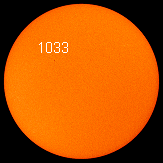 Sunspot 1033
is a member
Sunspot 1033
is a member of new Solar Cycle 24. Credit: SOHO/MDI Solar wind speed: 524.8 km/sec density: 0.9 protons/cm3 explanation | more data Updated: Today at 0153 UT X-ray Solar Flares 6-hr max: A0 1805 UT Nov21 24-hr: A1 0705 UT Nov21 explanation | more data Updated: Today at: 2355 UT
Earth is
inside a solar wind
|
||||||
| 11-21-09 - Sunspot 1033 - 1032 has
already faded away
speed: 493.1 km/sec density: 1.8 protons/cm3 explanation | more data Updated: Today at 2342 UT X-ray Solar Flares 6-hr max: A0 1805 UT Nov21 24-hr: A1 0705 UT Nov21 explanation | more data Updated: Today at: 2340 UT
NORTHERN LIGHTS:
A solar wind stream is
buffeting Earth's magnetic field and
causing bright auroras around the
Arctic Circle. Last night in Tromsø,
Norway, sky watcher Thomas Hagen
looked up and saw this: "It was stunning!" he says. "I
photographed the display using a
Canon 40D set at ISO 800 for 4
seconds." Arctic people should take note of
those settings. The solar wind is
still blowing and the auroras could
return tonight. NOAA forecasters
estimate a 20%-30% chance of
high-latitude geomagnetic activity.
UPDATED:
November Northern Lights Gallery |
||||||
| 11-20-09 Two sunspots - 1032 and 1033
SOLAR ACTIVITY: The sun is coming to life. There are several new-cycle active regions scattered across the solar disk and the limb of the sun has some very photogenic prominences. Readers with solar telescopes should dust off their optics and take a look Current conditions Solar windspeed: 450.4 km/sec density: 3.0 protons/cm3 explanation | more data Updated: Today at 2345 UT X-ray Solar Flares 6-hr max: A3 2140 UT Nov20 24-hr: A3 2140 UT Nov20 explanation | more data Updated: Today at: 2340 UT
|
||||||
| 11-19-09 Two new sunspots - 1032 and 1033 -
very small
Current conditions
Solar
wind speed: 336.5 km/sec density: 2.4 protons/cm3 explanation | more data Updated: Today at 2346 UT X-ray Solar Flares 6-hr max: A2 2010 UT Nov19 24-hr: A4 1105 UT Nov19 explanation | more data Updated: Today at: 2340 UT GREAT WESTERN FIREBALL: Yesterday, Nov. 18th, something exploded in the atmosphere above the western United States. Witnesses in Colorado, Utah, Wyoming and Idaho say the fireball "turned night into day" and issued shock waves that "shook the ground" when it exploded just after midnight Mountain Standard Time. The fireball was so bright it actually turned the night sky noontime blue, as shown in this image from KSL TV in Utah: Although the fireball appeared during the Leonid meteor shower, it was not a Leonid. Infrasound recordings of the blast suggest a small asteroid hitting Earth's atmosphere and exploding with an energy of 0.5 to 1 kiloton of TNT. Experts liken the event to the Park Forest fireball of 2003, which scattered dozens of meteorites across a suburb of Chicago. Meteorites are likely from this fireball as well. Stay tuned for developing information about the possible fall zone. more fireball images: from KSL TV in Utah; from KTVB News in Idaho; from Thomas Ashcraft near Santa Fe, New Mexico; from Marsha Adams of Sedona, Arizona; Approximately 6 hours after the fireball, people in Utah and Colorado got another surprise. As the sun rose over those states, a twisting electric-blue cloud appeared in the dawn sky:
"These curious clouds on the horizon caught my attention just before sunrise," says photographer Don Brown of Park City, Utah. "They were strangely bright relative to the rest of the sky." The cloud strongly resembles artificial noctilucent clouds formed at high altitudes by rocket and shuttle launches. Yet there was no (officially reported) rocket launch at dawn on Nov. 18th. Could the cloud be associated with the fireball? The geographical coincidence is certainly striking. Debris from the fireball should have dissipated by sunrise, but the cloud remains unexplained and a connection to the fireball cannot yet be dismissed. Readers, if you have more information about this event, let us know. more mystery cloud images: from Lisa Cain of New Castle, Colorado; from Daniel Owen of Monarch, Utah; from John Omohundro of Grand Junction, Colorado; from Jeff Kendrick of Salt Lake City, Utah; from Allan Jeffers of Denver, Colorado; from Scott Stringham of Salt Lake City, Utah; from Sean O'Leary of West Jordan, Utah;
UPDATED:
2009 Leonid Meteor
Gallery
|
||||||
| 11-18-09 - No sunspots today
A solar wind stream
flowing speed: 283.4 km/sec density: 1.4 protons/cm3 explanation | more data Updated: Today at 1325 UT X-ray Solar Flares 6-hr max: A0 0850 UT Nov18 24-hr: A0 0850 UT Nov18 explanation | more data Updated: Today at: 1325 UT LEONID METEOR UPDATE: As forecasters predicted, observers in Asia witnessed a surge of Leonid meteors during the late hours of Nov. 17th. Preliminary counts from the International Meteor Organization exceed 150 meteors per hour: The surge occurred when Earth passed through a double-stream of debris from Comet 55P/Tempel-Tuttle. We call it a "double-stream" because it consists of dust ejected from the comet on two occasions, in 1466 AD and 1533 AD. Earth is exiting the double-stream now, but we're not out of it yet. Be alert for Leonids between midnight and dawn: sky map. more Leonid images: from Chris Peterson of Guffey, Colorado; from Andreas Gada of Oak Heights, Ontario; from Runar Sandnes of Reed, Norway; from Victor van Wulfen of Sutherland, South Africa; from Olivier Staiger in the Swiss Alps; from Malcolm Park of Grafton, Ontario, Canada; Leonid resources:
LISTEN: The Air Force Space Surveillance Radar is scanning the skies above Texas, and when a Leonid passes over the facility--ping!--there is an echo. Tune into Spaceweather Radio for a live audio feed.
2009 Leonid Meteor
Gallery GOODBYE SUN: "The last week has been special with the sun rising in the south and setting in the south only an hour later," reports Fredrik Broms of Kvaløya, Norway. "But today (Nov. 16) the sun barely made it above the horizon." He photographed the few visible rays using a Nikon D3: "Now sky watchers around the Arctic Circle enter the long polar night when the sun doesn't rise at all. How long this period lasts depends on your latitude. Here in northern Norway, the sun won't be back until the end of January." "Goodbye sun, until 2010!"
|
||||||
| 11-17-09 - Sunspot 1031
Tiny sunspot 1031
is a member of new Solar Cycle 24. speed: 295.8 km/sec density: 0.9 protons/cm3 explanation | more data Updated: Today at 2345 UT X-ray Solar Flares 6-hr max: A3 2300 UT Nov17 24-hr: A7 1300 UT Nov17 explanation | more data Updated: Today at: 2340 UT
|
||||||
| 11-16-09 Sunspot 1031 - very small
Current conditions
Solar
wind speed: 321.4 km/sec density: 0.2 protons/cm3 explanation | more data Updated: Today at 2339 UT X-ray Solar Flares 6-hr max: A0 1915 UT Nov16 24-hr: A1 0805 UT Nov16 explanation | more data Updated: Today at: 2340 UT
|
||||||
| 11-15-09
SUNSPOT CORPSE: Sunspot 1029
has returned from the farside of the
sun--and it is not impressive. All that
remains of the former behemoth is a bright
magnetic froth. Readers with
solar telescopes should target the
northeastern limb of the sun to see a
sunspot corpse. SOLAR PROMINENCE: Yesterday, Alan Friedman of Buffalo, New York, trained his telescope on the sun and waited for sunspot 1029 to reappear. But that wasn't going to happen. It was shaping up to be a dull observing session when something completely different popped into view: "This magnificent looping prominence stole the show from the corpse of sunspot 1029," says Friedman. "It was the most dramatic prominence I have seen in many months." The same prominence was putting on a show this morning, Nov. 15th, when the sun rose over the Philippines. "I was elated when I was able to see it clearly visible in the field of my eyepiece!" reports James Kevin Ty from Manila. "I quickly set up my PST (Personal Solar Telescope) and was able to monitor the prominence for more than 2 hours." Current conditions Solar windspeed: 363.1 km/sec density: 1.1 protons/cm3 explanation | more data Updated: Today at 2155 UT X-ray Solar Flares 6-hr max: A1 1905 UT Nov15 24-hr: A2 0245 UT Nov15 explanation | more data Updated: Today at: 2155 UT
|
||||||
| 11-14-09 - Sunspot 1029 coming around the corner
again
EMERGING SUNSPOT:
Amateur astronomers are
reporting that old sunspot 1029 is
back. The sun's rotation is bringing
it into view over the sun's
northeastern limb. Readers with
solar telescopes are encouraged
to monitor developments.
images:
from Stephen Ames of
Hodgenville, Kentucky;
from Stefano Sello of Pisa,
Italy;
from Howard Eskildsen of Ocala,
Florida
WATER ON
THE MOON:
Last month when
NASA's LCROSS
spacecraft hit
the Moon and
failed to
produce a bright
flash, many
observers
thought the
experiment was a
dud.
Think again.
NASA has
announced that
LCROSS
discovered water
at the bottom of
crater Cabeus
near the Moon's
south pole. The primary evidence is spectral. When LCROSS's Centaur rocket hit the ground, it produced a faint cloud of vapor. High above, the LCROSS mothership analyzed the cloud using its near-infrared spectrometer. Some of the bumps and wiggles in the spectrum perfectly match the infrared signature of H2O: The red curve traces what the spectrum would have looked like if the debris cloud had been made of nothing but moondust and pure water vapor. Points with error bars are the actual data. Clearly, water is present, but that's not all. "Along with the water in Cabeus, there are hints of other intriguing substances," says Anthony Colaprete, the mission's principal investigator the NASA's Ames Research Center. "The possibility of contamination from the Centaur rocket [has been] ruled out," so any unidentified compounds are likely native to the Moon. What are these mystery substances? Remember, LCROSS targeted a "cold trap" where materials have been freezing and accumulating for billions of years. It could be almost anything. Researchers are still studying the spectra for clues. "Full understanding of the LCROSS data may take some time," notes Colaprete. "The data are so rich." Current conditions Solar windspeed: 367.6 km/sec density: 1.2 protons/cm3 explanation | more data Updated: Today at 2345 UT X-ray Solar Flares 6-hr max: A0 2230 UT Nov14 24-hr: A2 0415 UT Nov14 explanation | more data Updated: Today at: 2340 UT
|
||||||
| 11-13-09 - No sunspots today
Current conditions
Solar
wind speed: 302.0 km/sec density: 5.1 protons/cm3 explanation | more data Updated: Today at 2346 UT X-ray Solar Flares 6-hr max: A0 1930 UT Nov13 24-hr: A1 0915 UT Nov13 explanation | more data Updated: Today at: 2340 UT STUCK ON MARS: NASA is about to begin transmitting commands to its Mars rover Spirit as part of an escape plan to free the venerable robot from a Martian sand trap. Officials say there is little hope of freeing Spirit, with a best case senario of "severe wheel slippage" and "barely detectable forward progress." On the bright side, Spirit is stuck in a very interesting spot. Science@NASA has the full story. SOLAR ACTIVITY: Friday the 13th could be a lucky day for astrophotographers. A photogenic scene is developing on the sun's northeastern limb, where a magnetic thicket of hot plasma is rising into view. The Solar and Heliospheric Observatory (SOHO) made this movie of the action on Nov. 12th and 13th:
The swelling limb-glow heralds the approach of sunspot 1029, the biggest and most active sunspot of the year. Sunspot 1029 spent the past two weeks transiting the farside of the sun, invisible from Earth, but now it is about to reappear. Friday the 13th kicks off a 2- to 3-day photo-op as the sun's rotation slowly turns the active region back toward Earth. Readers with solar telescopes are encouraged to monitor developments. Archival images of sunspot 1029: from Jimmy Eubanks of Boiling Springs, South Carolina; from Dave Gradwell of Birr, Ireland; from Pete Lawrence of Selsey, West Sussex, UK; from Paul Haese of Blackwood, South Australia
|
||||||
| 11-12-09 - No sunspots today This is 1029 on the backside AROUND THE BEND: The "green sun" pictured below is an ultraviolet-wavelength photo taken just hours ago by NASA's STEREO-B spacecraft. What lies beneath the circled thicket of hot plasma and magnetic fields? It could be the most active sunspot of the year.
The circle marks the location of sunspot 1029. In late October, sunspot 1029 materialized on the Earth-facing side of the sun and quickly established itself as the biggest active region of 2009. It produced more than ten C-class solar flares, single-handedly quadrupling the number of such eruptions since the year began. For the past 11 days, however, sunspot 1029 has been out of sight transiting the farside of the sun. The sunspot is still invisible from Earth, but STEREO-B can see it because the spacecraft is stationed over the sun's eastern horizon. The glaring knot of extreme ultraviolet activity hides the sunspot's underlying dark core from STEREO's UV telescopes, and this limits how much we know about it. Has sunspot 1029 broken apart and diminished during its long farside transit? Or is it still its old active self? Answers will be revealed in 3 days when solar rotation turns sunspot 1029 toward white-light cameras on Earth. Current conditions Solar windspeed: 289.0 km/sec density: 0.6 protons/cm3 explanation | more data Updated: Today at 2344 UT X-ray Solar Flares 6-hr max: A0 2255 UT Nov12 24-hr: A0 2255 UT Nov12 explanation | more data Updated: Today at: 2340 UT
|
||||||
| 11-11-09 - No sunspots today
Current conditions
Solar
wind speed: 277.9 km/sec density: 1.6 protons/cm3 explanation | more data Updated: Today at 2345 UT X-ray Solar Flares 6-hr max: A0 2340 UT Nov11 24-hr: A0 0000 UT Nov11 explanation | more data Updated: Today at: 2340 UT
|
||||||
| 11-10-09 - No sunspots today - Sunspot 1030 appeared
and quickly faded away
Current conditions
Solar
wind speed: 339.1 km/sec density: 1.9 protons/cm3 explanation | more data Updated: Today at 2344 UT X-ray Solar Flares 6-hr max: A0 2340 UT Nov10 24-hr: A0 1740 UT Nov10 explanation | more data Updated: Today at: 2340 UT SUNSET FIREBALL: If only photographers had faster reflexes.... On Saturday, Nov. 7th, around 5 p.m. Pacific time, a brilliant fireball raced4 across the sky of California's San Francisco Bay, where tens of thousands of people saw it. So far, however, not a single photo of the fireball has emerged. The meteor disappeared into the sunset before anyone could raise his or her camera. When shutters finally started clicking, all that remained was a trail of debris:
"Pepper Dela Cruz took this picture outside the Miramar Restaurant in Half Moon Bay on the San Francisco Peninsula just as the sun was setting," says Doug Moore, who submitted the photo on Pepper's behalf. "It shows debris from the fireball, which lasted for several minutes before dissipating." The origin of the fireball is still uncertain. Meteor expert Peter Jenniskens of NASA's Ames Research Center believes it was "a small, random asteroid that crashed into our atmosphere. The remains [of the space rock] probably landed in the Pacific Ocean," he says. More fireballs are in the offing. Earth is passing through a stream of debris from Comet 2P/Encke, and this is causing the annual Taurid meteor shower, which peaks between now and Nov. 12th. The shower only produces about 5 meteors per hour, but what the display lacks in number, it makes up for in dazzle. Taurids tend to be fireballs, slow and very bright. The best time to look is during the hours around midnight when the constellation Taurus is high overhead: sky map. Note: Based on the time of day and other factors, Jenniskens says "the Bay Area fireball was probably not a Taurid."
|
||||||
| 11-9-09 - Sunspots 1029 returns today - its on
the farside stereo camera
Current
conditions
Solar wind speed: 382.8 km/sec density: 2.4 protons/cm3 explanation | more data Updated: Today at 1506 UT X-ray Solar Flares 6-hr max: A0 1500 UT Nov09 24-hr: A0 0205 UT Nov09 explanation | more data Updated: Today at: 1500 UT ASTEROID NEAR MISS: On Nov. 6th at 2132 UT, asteroid 2009 VA barely missed Earth when it flew just 14,000 km above the planet's surface. That's well inside the "Clarke Belt" of geosynchronous satellites. If it had hit, the ~6-meter wide space rock would have disintegrated in the atmosphere as a spectacular fireball, causing no significant damage to the ground. 2009 VA was discovered just 15 hours before closest approach by astronomers working at the Catalina Sky Survey. RETURNING SUNSPOT: The most active sunspot of the year, sunspot 1029, has spent the past week transiting the far side of the sun. It is still invisible from Earth, but the active region is coming into range of cameras onboard NASA's STEREO-B probe. The spacecraft beamed back this extreme ultraviolet image just hours ago:
A farside eruption on Nov. 5th (movie) suggests that the sunspot is still active. In late October, the last time we saw it on the Earth-facing side of the sun, sunspot 1029 unleashed more than 10 C-class solar flares, single-handedly quadrupling the total number of flares in all of 2009. The sun's rotation will turn the active region back toward Earth about four days from now. Until then, STEREO-B will keep us informed. Stay tuned. BONUS: weekend solar images: from Pete Lawrence of Selsey, West Sussex, UK; from Alan Friedman of Buffalo, New York; from Jan Timmermans of Valkenswaard, The Netherlands
October Northern Lights Gallery |
||||||
| 11-8-09 - No sunspots today
Current conditions
Solar
wind speed: 436.2 km/sec density: 3.2 protons/cm3 explanation | more data Updated: Today at 2344 UT X-ray Solar Flares 6-hr max: A0 2340 UT Nov08 24-hr: A0 2340 UT Nov08 explanation | more data Updated: Today at: 2340 UT
|
||||||
| 11-7-09 - No sunspots today
Current conditions
Solar
wind speed: 273.6 km/sec density: 2.1 protons/cm3 explanation | more data Updated: Today at 2344 UT X-ray Solar Flares 6-hr max: A0 2340 UT Nov07 24-hr: A0 1410 UT Nov07 explanation | more data Updated: Today at: 2340 UT MAGNETIC FILAMENT: Today, amateur astronomers are monitoring a picturesque magnetic filament looping around the western limb of the sun. Jan Timmermans sends this picture from his backyard observatory in Valkenswaard, The Netherlands:
The portion of the filament seen in front of the sun looks dark, because it is cooler than the inferno below. But note how the filament glows in projection against the black space beyond the limb. The glow comes from plasma trapped inside the filament--not as bright as the surface of the sun, but definitely brighter than the void. "The image clearly shows that the only difference between a 'dark' filament and a 'bright' prominence is where they are located: inside or outside the solar disk," notes Timmermans. (diagram) more images: from Alan Friedman of Buffalo, New York; from Stephen Ames of Hodgenville, Kentucky;
|
||||||
| 11-6-09 - Sunspot 1030
speed: 276.1 km/sec density: 1.6 protons/cm3 explanation | more data Updated: Today at 2344 UT X-ray Solar Flares 6-hr max: A0 2340 UT Nov06 24-hr: A0 2340 UT Nov06 explanation | more data Updated: Today at: 2340 UT
|
||||||
| 11-5-09 Small sunspots
Sunspots are trying
to emerge at the circled locations. They do not yet show
up in SOHO white light images, but the active regions
are clear in
this magnetic map. Photo credit: SOHO/MDI
CME OF 11-5-09 FARSIDE EXPLOSION: Yesterday, something exploded on the far side of the sun. The blast hurled a coronal mass ejection (CME) over the sun's limb, recorded by coronagraphs on the Solar and Heliospheric Observatory (SOHO). Click on the image to launch a 14-hour time lapse movie:The source of the eruption is probably sunspot 1029, which is transiting the far side of the sun. Last week, when sunspot 1029 was visible from Earth, it quickly grew into the biggest and most active sunspot of the year, unleashing ten C-class solar flares in just a few days. Apparently, the action hasn't stopped. The sun's rotation will turn the sunspot back toward Earth about a week from now. If the sunspot holds together that long, we could experience some solar activity. Stay tuned. Current conditions Solar windspeed: 287.3 km/sec density: 0.2 protons/cm3 explanation | more data Updated: Today at 2343 UT X-ray Solar Flares 6-hr max: A0 2340 UT Nov05 24-hr: A0 0935 UT Nov05 explanation | more data Updated: Today at: 2340 UT
|
||||||
| 11-4-09 - No sunspots today
Current conditions
Solar
wind speed: 298.7 km/sec density: 2.3 protons/cm3 explanation | more data Updated: Today at 2346 UT X-ray Solar Flares 6-hr max: A0 2045 UT Nov04 24-hr: A0 2045 UT Nov04 explanation | more data Updated: Today at: 2340 UT MERCURY'S COMET-LIKE TAIL: The ultrathin atmosphere of Mercury is blown back by solar radiation pressure, forming an enormous comet-like tail. NASA's MESSENGER spacecraft flew through that tail on Sept. 29th and found it less enormous than it used to be. The following diagram compares the situation in Oct. 2008 vs. Sept. 2009:
Red traces the distribution of sodium atoms detected by a spectrometer onboard MESSENGER. "The neutral sodium tail, so prominent in our first two flybys of Mercury, is now significantly reduced in extent," announced planetary scientist Ron Vervack at a NASA press conference yesterday. The material in Mercury's tail comes from the surface of the planet itself, which is blasted by solar wind and micrometeorites. During MESSENGER's recent flyby of Mercury, the net effect of solar radiation pressure was small, and the sodium atoms were not accelerated away from the sun as they were during the earlier flybys, resulting in a diminished planetary tail. That's space weather. Get the full story from Science@NASA.
|
||||||
| 11-3-09 - No sunspots today
Current
conditions
Solar wind speed: 317.3 km/sec density: 0.2 protons/cm3 explanation | more data Updated: Today at 1725 UT X-ray Solar Flares 6-hr max: A0 1410 UT Nov03 24-hr: A0 1410 UT Nov03 explanation | more data Updated: Today at: 1730 UT NOT-SO-BLANK SUN: Today, the sunspot number is zero, which means the sun is blank, right? Wrong. This morning, NASA's STEREO-A spacecraft photographed sunspot 1029 seething with activity over the sun's western horizon:
This impressive sunspot, which rotated over the sun's western limb three days ago, does not add to the sunspot number because it is no longer visible from Earth. Astronomers only count spots that are on the Earth-facing side of the sun. That's how it's been done since Rudolph Wolf invented the sunspot number in 1848. In those days, only one side of the sun was visible from Earth, so the tradition was established. Now, however, for the first time in the history of astronomy, NASA's twin STEREO spacecraft are seeing over the sun's horizon, tracking sunspots that officially "don't count." The two spacecraft are moving toward opposite sides of the sun, and by February 2011 the entire sun will be under their watchful eyes. Perhaps it is time to start thinking about a "whole sun" sunspot number. As today's image shows, the sun is not always as blank as it appears to be. BLUE ICE ON THE RED PLANET: Wake up before dawn, go outside, and look straight up. That eerie red "star" staring back down at you is Mars. The red planet is approaching Earth for a close encounter in January 2010 and it is already brighter than a first-magnitude star.Next, point a telescope at the red planet and you'll see a surprising splash of icy blue:
"Mars' north polar cap is big enough and bright enough to be seen though most backyard telescopes at medium to high power," says Joel Warren of Amarillo, Texas, who took the picture, above, on Halloween using an 11 inch Celestron telescope. On Mars, northern winter has just ended and clouds which normally hover over the martian arctic are breaking up, allowing the planet's great ice cap to be seen. "This apparition will offer observers the best view of the North Polar Region to be had in many years," notes Warren. more images: from Peter Garbett of Sharnbrook, UK; from Rolando Ligustri of Italy using a remotely-controlled telescope in New Mexico; from Ed Lomeli of Sacramento, California;
|
||||||
| 11-2-09 - No sunspots today
Current conditions
Solar
wind speed: 362.4 km/sec density: 0.5 protons/cm3 explanation | more data Updated: Today at 2345 UT X-ray Solar Flares 6-hr max: A0 2340 UT Nov02 24-hr: A2 0230 UT Nov02 explanation | more data Updated: Today at: 2340 UT |
||||||
| 11-1-09 - No sunspots today
Current conditions
Solar
wind speed: 333.0 km/sec density: 1.4 protons/cm3 explanation | more data Updated: Today at 2344 UT X-ray Solar Flares 6-hr max: A4 1850 UT Nov01 24-hr: B4 0140 UT Nov01 explanation | more data Updated: Today at: 2340 UT PARTING SHOT: On its way over the sun's western limb on Oct. 31st, sunspot 1029 unleashed a C-class solar flare and a coronal mass ejection (CME). The Solar and Heliospheric Observatory photographed the billion-ton CME billowing past Mercury: The blast reinforces sunspot's 1029's position as the most active sunspot of 2009. Last week alone, the sunspot produced ten C-class solar flares, more than tripling the number of flares in the previous 10 months. Sunspot 1029 is a member of long-overdue Solar Cycle 24. Is it also a herald of more active times to come? SEE OCTOBER PAGE FOR LARGER IMAGE.
A solar wind stream
flowing from | ||||||
